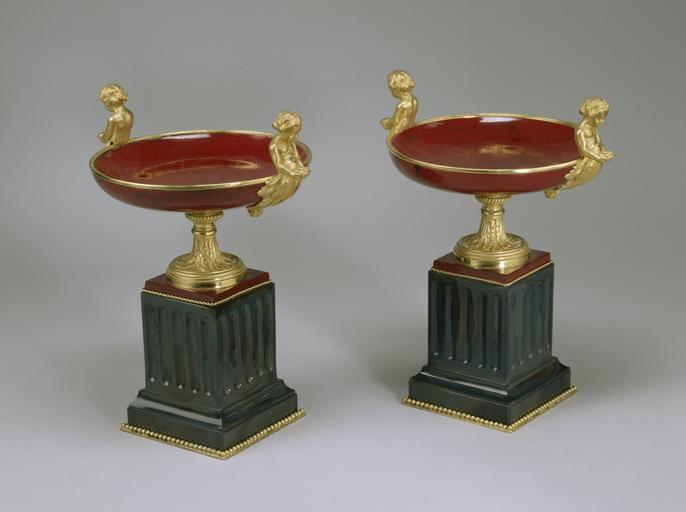MAKE A MEME
View Large Image

| View Original: | Imperial_Glassworks_-_Pair_of_Tazzas_-_Walters_47415,_47416_-_Group.jpg (1799x1342) | |||
| Download: | Original | Medium | Small | Thumb |
| Courtesy of: | commons.wikimedia.org | More Like This | ||
| Keywords: Imperial Glassworks - Pair of Tazzas - Walters 47415, 47416 - Group.jpg These kylix-shaped bowls are mounted with gilded bronze handles in the form of putti and are borne on feet decorated with acanthus leaves of the same metal Gilded bronze beading has also been applied to the fluted bases of the gray-blue glass The most outstanding feature of these tazzas is the intense sang de boeuf red of the bowls The material is purpurine a dense lead-potash glass containing crystals of cuprous oxide in a clear matrix It is named after porporino a red glass that had been developed by Alessio Matteoli in the Vatican mosaic workshop during the 18th century Leopold Bonafede one of two Italian brothers called to Russia in the mid 1850s by Tsar Nicholas I produced purpurine at the Imperial Glassworks in St Petersburg The earliest documented use of this product was for five of the Imperial Glassworks' six entries at the Paris Exposition Universelle in 1867 After Bonafede's death in 1878 purpurine continued to be made at the factory under the direction of the chief chemist S P Petuchov The Imperial Glassworks supplied Fabergé with purpurine though the jewelry firm developed its own purpurine of a slightly different chemical composition after 1880 late Other date century 19 purpurine gilded bronze colored glass cm 24 13 accession number 47 415 47 416 77444 Alexandre Polovtsoff Aleksandr Aleksandrovich Polovtsov Paris Henry Walters city Baltimore Walters Art Museum Henry Walters Acquired by Henry Walters 1930 place of origin St Petersburg Russia PD-old-auto 1917 Imperial Glassworks Glassware in the Walters Art Museum | ||||